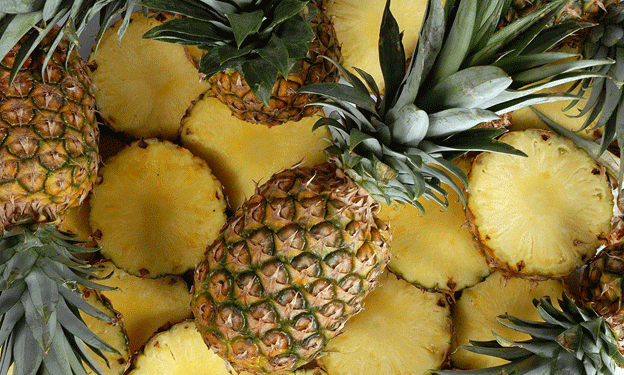While the overall export figures are impressive, the average price of Peruvian pineapples during this period saw a decline. The average price per kilogram dropped by 36% compared to the previous year, settling at $2.61 per kilogram. This price decrease may be attributed to increased supply, market competition, or a strategic pricing approach to penetrate new markets more effectively.
The most notable development in Q2 2024 was the expansion of Peru’s export destinations. From just six markets in the previous year, Peruvian pineapples reached 11 different countries in this quarter. The United States emerged as the dominant market, accounting for a substantial 90.9% of the total exports. The U.S. market alone imported 1,808 tons of Peruvian pineapples, worth $4.7 million, at an average price of $2.63 per kilogram.
Chile and France were also significant importers, though their volumes and values were much smaller compared to the U.S. Chile imported 125 tons at an average price of $1.99 per kilogram, contributing $248,000 to Peru’s export earnings. France, on the other hand, imported 34 tons at a higher average price of $3.41 per kilogram, totaling $116,000 in value.
Expanding Global Footprint and Market Opportunities
The expansion from six to 11 export destinations within a year reflects Peru’s growing reputation as a reliable supplier of high-quality pineapples. The increasing diversification of export markets is crucial for mitigating risks associated with dependence on a few major markets and can help stabilize revenues despite price fluctuations.
The U.S.’s overwhelming share of Peruvian pineapple exports highlights the strong demand in North America for tropical fruits, driven by health-conscious consumers and a robust distribution network that facilitates the rapid movement of fresh produce. The relatively lower prices in the U.S. market suggest that Peruvian exporters are keen on maintaining competitive pricing to secure their position in this lucrative market.
Chile and France, while smaller markets, represent strategic opportunities for Peru to further diversify its export portfolio. The higher price per kilogram in France, in particular, indicates a premium market segment that values quality, potentially offering higher margins for Peruvian producers.
Challenges and Future Outlook
Despite the positive export growth, the Peruvian pineapple industry faces several challenges that need to be addressed to sustain this momentum. The significant drop in average prices, while beneficial for market penetration, could squeeze profit margins if production costs rise or if market prices continue to decline. Additionally, logistical challenges, such as maintaining the freshness and quality of pineapples during long-distance transportation, remain critical for preserving Peru’s competitive edge.
Looking ahead, the Peruvian pineapple sector is poised for further growth if it can continue expanding into new markets and optimizing its production and supply chain processes. With increasing global demand for tropical fruits, Peru has the potential to solidify its position as a major player in the international pineapple market.
Peru’s impressive surge in pineapple exports during Q2 2024 underscores the country’s growing capabilities in the tropical fruit sector and its expanding global reach. With a 218% increase in export volume and a 103% rise in export value, Peru is well on its way to becoming a significant exporter in the global pineapple market. However, to sustain this growth, the industry must navigate pricing challenges and continue to explore new markets while maintaining high standards of quality and supply chain efficiency.































